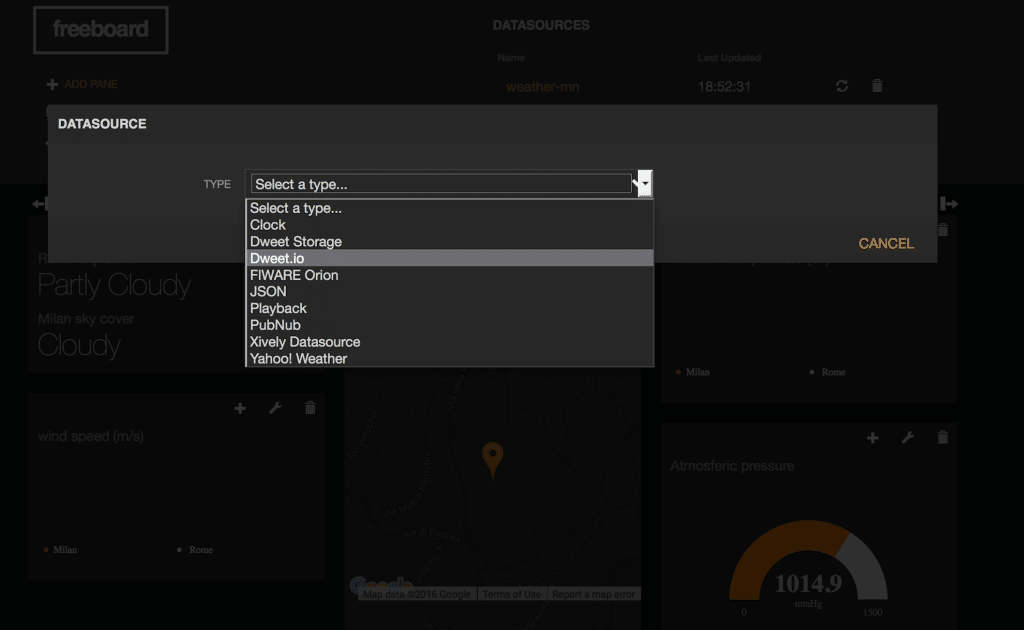
Messaging for the Internet of Things
During my Proof Of Concept development one of the most important aspect is how to display the IoT device data. It’s very fun and useful to show sensor data from field in cute and simple dashboard. In my last test I used dweet.io.
What is dweet.io ?
It is simple publishing and subscribing for machines, sensors, devices, robots, and gadgets (we just call them things). We call published messages ‘dweets’. It’s helpful to think of dweet.io as a Twitter for things, in fact.
We assign each thing a unique thing name (or you can assign your own if it’s available). Then a thing may be subscribed to, which is analogous to following someone in twitter.

How is dweet.io useful ?
dweet.io enables your sensor data to become easily accessible through a web based rest-API, allowing you to quickly make apps or simply share data. Some examples of data that can be dweeted:
Public swimming pool temperature
Air quality information in a city
Traffic light status
Train GPS position
By default, dweets are public. You can make dweets private by purchasing a lock for your thing. Locks are applied to thing names. They allow you to protect and reserve your thing so that only people (and apps, machines, etc) with special keys can access its dweets. Once you lock a thing, the name of that thing cannot be used by anyone else.
So I installed the dweet node in my node-red environment and I started to dweet my weather data:

You can read my dweet by the specific rest API using the unique thing name weather-mn-m.
Moreover I discovered that my preferred web dashboard, the freeboard, can use as data-source dweet.io:

Ready for another mash-up with dtweet.io ?
Your Feedback is Welcome.




4 Comments